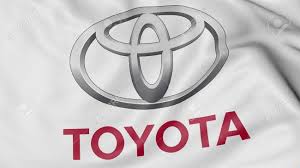
The plan of installation of Dedicated Short-Range Communications technology in vehicles the US which allows cars and trucks to communicate with each other to avoid accidents is being stopped for the time being by Toyota Motor Corp, the company has said.
There has been indecision among automakers about whether to go ahead with the implementation of the DSRC system or make use of 4G- or 5G-based system in the United States instead. Advocates of DSRC have been dealt a blow by the decision of Toyota.
Installation of DSRC technology was planned to be started in 2021 "with the goal of adoption across most of its lineup by the mid-2020s" was announced by the Japanese automaker in April 2018.
However the company on Friday informed the Federal Communications Commission (FCC) in a letter: "unfortunately we have not seen significant production commitments from other automakers."
Despite allocations of spectrum for DSRC in the 5.9 GHz band in 1999 for the auto makers, it has essentially remained unused.
More than $700 million in the system's development have been invested by the U.S. Transportation Department, say supporters of DSRC.
The latest decision taken by Toyota said Friday's is based on "a range of factors, including the need for greater automotive industry commitment as well as federal government support to preserve the 5.9 GHz spectrum band for DSRC," the company said.
The company said that the chance that the band could be subjected to "harmful interference from unlicensed operations... creates a substantial and arguably insurmountable risk."
It further said that it would "continue to re-evaluate the deployment environment" and said it is still a strong backer of DSRC "because we believe it is the only proven and available technology for collision avoidance communication."
The Intelligent Transportation Society of American, a group representing public, private and academic organizations said that Toyota's announcement means it is "imperative that the FCC provide clear guidance and certainty to the private sector companies and road operators that are trying to create a safer environment."
Vehicle-to-vehicle and vehicle-to-infrastructure communications is enabled by DSRC transmissions and helps in the broadcasting of exact vehicle information up to 10 times per second that includes the location of the location, speed and acceleration.
Severity of accidents of up to 80 percent in crashes that do involving impaired drivers can be reduced or eliminated by use of connected vehicles technologies, NHTSA has estimated.
DSRC has been backed by General Motors Co and a limited number of Cadillac CTS sedans that the company had sold since 2017 had been installed with the technology.
DRSC was proposed to be made mandatory in all new vehicles by the Department of Transportation in December 2016. The proposal has not been acted upon by the Trump administration.
The agency's "past research has centered around DSRC — because that was the only technology available", said Heidi King, the acting head of the U.S. National Highway Traffic Safety Administration last year.
The NHTSA was "exploring other technologies" including cellular-based services being pursued by Ford Motor Co, she said.
(Source:www.todayonline.com)
There has been indecision among automakers about whether to go ahead with the implementation of the DSRC system or make use of 4G- or 5G-based system in the United States instead. Advocates of DSRC have been dealt a blow by the decision of Toyota.
Installation of DSRC technology was planned to be started in 2021 "with the goal of adoption across most of its lineup by the mid-2020s" was announced by the Japanese automaker in April 2018.
However the company on Friday informed the Federal Communications Commission (FCC) in a letter: "unfortunately we have not seen significant production commitments from other automakers."
Despite allocations of spectrum for DSRC in the 5.9 GHz band in 1999 for the auto makers, it has essentially remained unused.
More than $700 million in the system's development have been invested by the U.S. Transportation Department, say supporters of DSRC.
The latest decision taken by Toyota said Friday's is based on "a range of factors, including the need for greater automotive industry commitment as well as federal government support to preserve the 5.9 GHz spectrum band for DSRC," the company said.
The company said that the chance that the band could be subjected to "harmful interference from unlicensed operations... creates a substantial and arguably insurmountable risk."
It further said that it would "continue to re-evaluate the deployment environment" and said it is still a strong backer of DSRC "because we believe it is the only proven and available technology for collision avoidance communication."
The Intelligent Transportation Society of American, a group representing public, private and academic organizations said that Toyota's announcement means it is "imperative that the FCC provide clear guidance and certainty to the private sector companies and road operators that are trying to create a safer environment."
Vehicle-to-vehicle and vehicle-to-infrastructure communications is enabled by DSRC transmissions and helps in the broadcasting of exact vehicle information up to 10 times per second that includes the location of the location, speed and acceleration.
Severity of accidents of up to 80 percent in crashes that do involving impaired drivers can be reduced or eliminated by use of connected vehicles technologies, NHTSA has estimated.
DSRC has been backed by General Motors Co and a limited number of Cadillac CTS sedans that the company had sold since 2017 had been installed with the technology.
DRSC was proposed to be made mandatory in all new vehicles by the Department of Transportation in December 2016. The proposal has not been acted upon by the Trump administration.
The agency's "past research has centered around DSRC — because that was the only technology available", said Heidi King, the acting head of the U.S. National Highway Traffic Safety Administration last year.
The NHTSA was "exploring other technologies" including cellular-based services being pursued by Ford Motor Co, she said.
(Source:www.todayonline.com)














